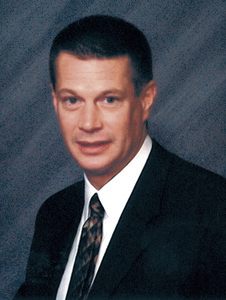PUT YOUR FINANCIAL “PUZZLE” PIECES TOGETHER
 Unless you keep track of obscure holidays, you may not be aware that January 29 is National Puzzle Day. And while this day may not draw much attention, it does recognize the enjoyment that millions of people get from doing puzzles. Of course, you’ll find puzzles in all aspects of your life. Consider, for example, the type of retirement lifestyle you’ve envisioned: travel, volunteering, pursuing hobbies, and perhaps even opening your own business. To make this picture come to life, you need to put the financial “pieces” together: And one way to help accomplish this is to consolidate your various retirement accounts — such as your IRA, 401(k) and other employer-sponsored retirement plans — with one financial services provider.
Unless you keep track of obscure holidays, you may not be aware that January 29 is National Puzzle Day. And while this day may not draw much attention, it does recognize the enjoyment that millions of people get from doing puzzles. Of course, you’ll find puzzles in all aspects of your life. Consider, for example, the type of retirement lifestyle you’ve envisioned: travel, volunteering, pursuing hobbies, and perhaps even opening your own business. To make this picture come to life, you need to put the financial “pieces” together: And one way to help accomplish this is to consolidate your various retirement accounts — such as your IRA, 401(k) and other employer-sponsored retirement plans — with one financial services provider.
When you consolidate these types of accounts, you can gain a number of key benefits, including these:
•Potential reduction of fees and paperwork — By working with just one provider, you may be able to save on the fees and paperwork required to maintain your account.
•Easier management of distributions — Most retirement plans, including a 401(k), 457(b), 403(b) and a traditional IRA, require you to start taking minimum distributions once you turn 70 1/2. (These distributions are not required for Roth IRAs.) While it’s not terribly complicated to determine a single distribution, it can be cumbersome and confusing to calculate multiple distributions from multiple providers. Having all your RMDs coming from a single provider can greatly streamline the process.
•Easier calculation of taxes — Most types of retirement accounts are tax-deferred — but on those accounts, taxes will be due on your withdrawals. By consolidating your accounts, your distributions will be easier to track, as mentioned above, which may make it easier for you to calculate the taxes due.
•Unified investment strategy — If you place all your financial assets with one financial-services provider, you’ll find it much easier to follow a single, unified investment strategy. A local, qualified financial advisor can help you allocate your investment dollars in a way that’s appropriate for your retirement goals, risk tolerance and time horizon.
To start the consolidation process, make a detailed list of your financial assets, such as your bank accounts, investments, IRAs and employer-sponsored retirement plans, such as a 401(k), if you worked for a private employer, a 457(b), if you worked for a state or local government, or a 403(b), if you worked for a school or other tax-exempt organization. You might think this is a simple and straightforward task, but you would be surprised at how many people actually lose track of these types of accounts, and, as a result, may forfeit the money that is rightfully theirs.
After you’ve identified what assets you have, and where they’re located, seek to consolidate them with a financial services provider. Try to find one that offers face-to-face service and regular reviews of your situation.
As you can see, by consolidating your various investment accounts, you can help solve the “puzzle” of creating the retirement you seek. So, when the time comes, start putting all the pieces together. You might like the picture that ultimately emerges.
- What To Know About Mosquito Season - July 19, 2024
- Local Worship & Events: July 19 Update - July 19, 2024
- Allen County Bar Foundation Announces Scholarship Winners - July 19, 2024

